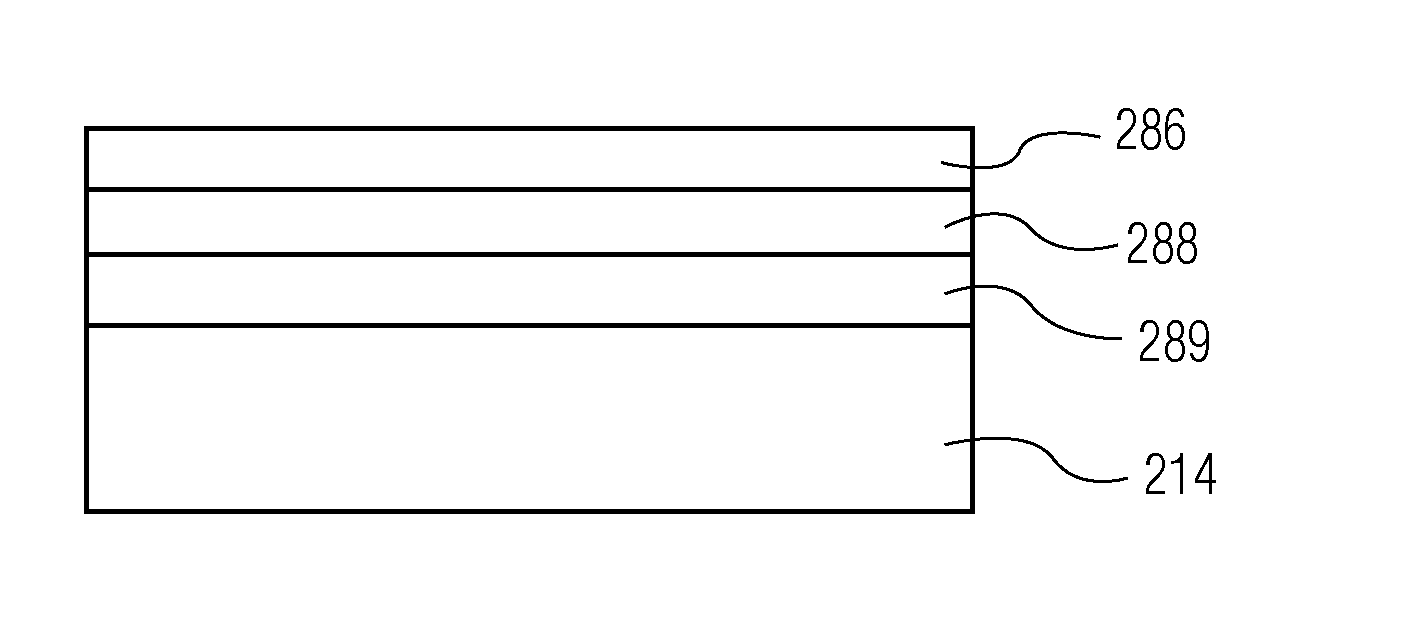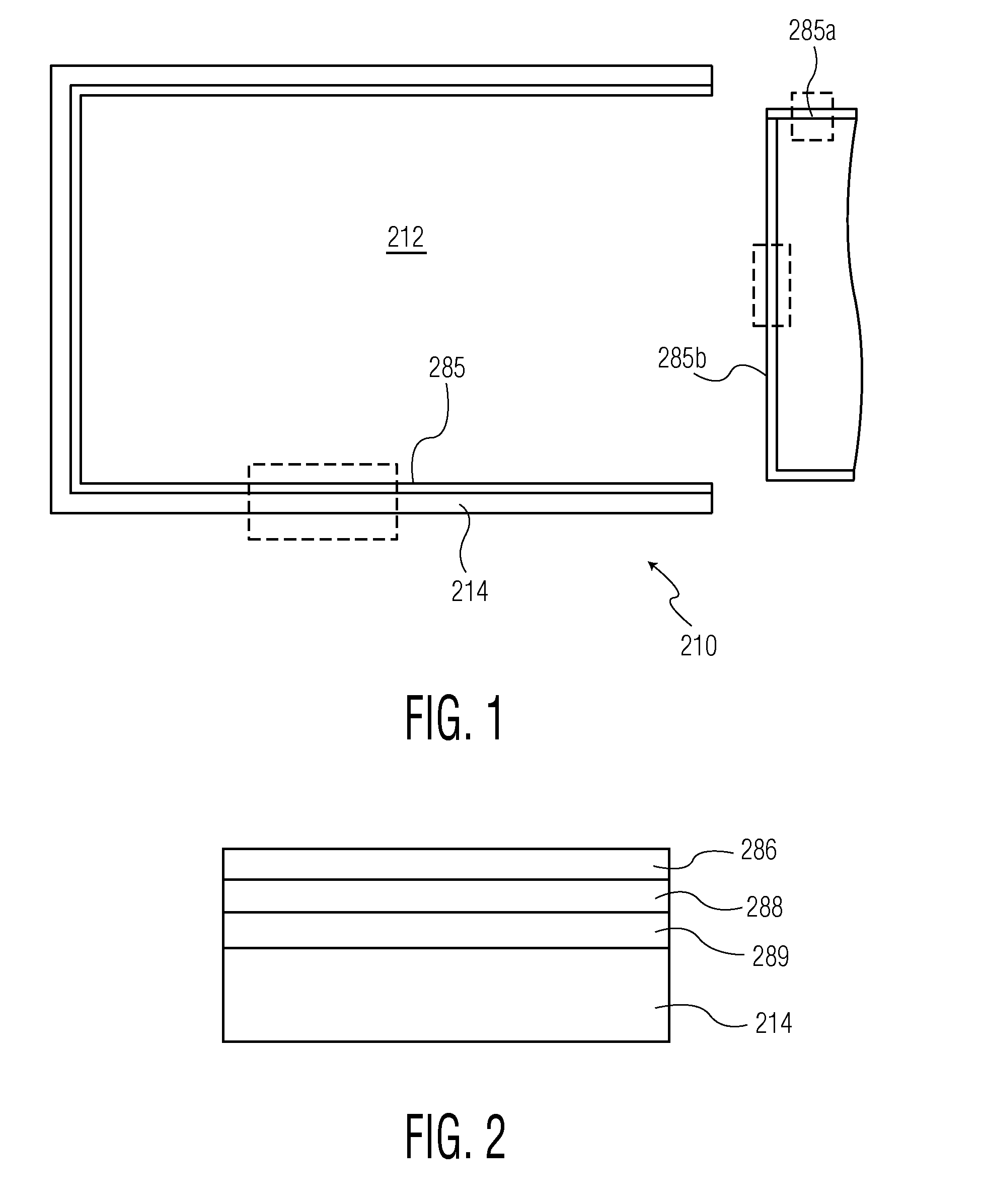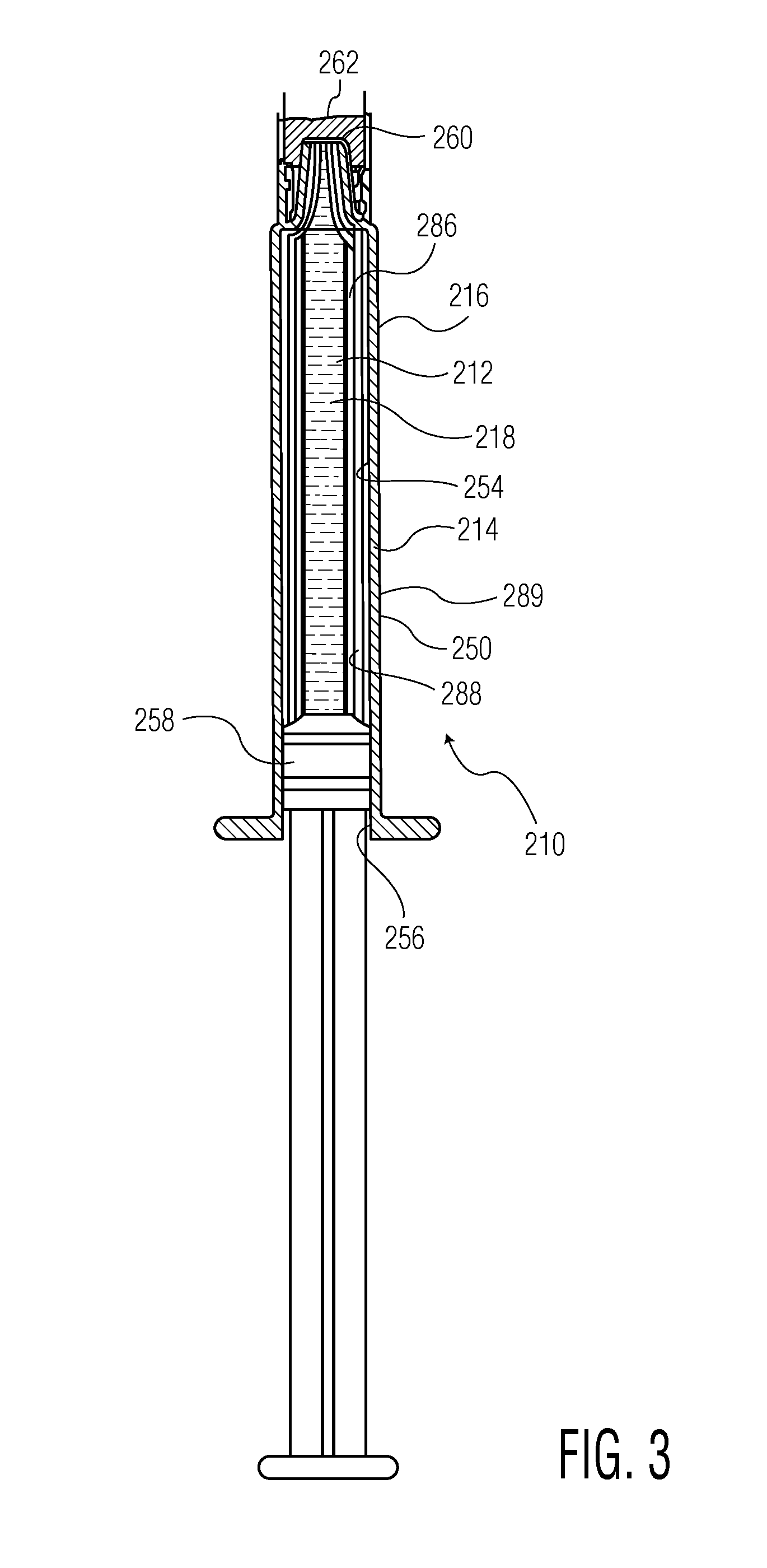Trilayer coated pharmaceutical packaging
a technology of pharmaceutical packaging and barrier coating, which is applied in the direction of packaging foodstuffs, instruments, packaged goods, etc., can solve the problems of glass particulates entering the drug, the use of primary pharmaceutical packaging remains limited, and the packaging of pharmaceutical packages or other vessels is prone to breakage or degradation, so as to reduce the ingress of atmospheric gas
- Summary
- Abstract
- Description
- Claims
- Application Information
AI Technical Summary
Benefits of technology
Problems solved by technology
Method used
Image
Examples
examples 1-4
Conditions for Production of pH Protective Layer
[0180]Some conditions used for production of pH Protective Layers are shown in Table 1.
TABLE 1OMCTS-BASED PLASMA pH PROTECTIVE COATING OR LAYER MADE WITH CARRIER GASpHprotectiveprotectiveCarrier GaspHpHPHprotective coatingOMCTSO2(Ar)protective coatingprotective coatingprotectiveor layer TimeFlow RateFlow RateFlow Rateor layer PowerExampleor layer TypeMonomer(sec)(sccm)(sccm)(sccm)(Watts)1Uncoatedn / an / an / an / an / an / a(Control)COC2Silicon oiln / an / an / an / an / an / a(Industry Standard)on COC3L3 lubricity coatingOMCTS10 sec30656(without Oxygen)or layer overSiOx on COC4L2 pH protectiveOMCTS10 sec31656(with Oxygen)coating or layer overSiOx on COC
examples 5-8
[0181]Syringe samples were produced as follows. A COC 8007 extended barrel syringe was produced according to the Protocol for Forming COC Syringe Barrel. An SiOx barrier coating or layer was applied to the syringe barrels according to the Protocol for Coating COC Syringe Barrel Interior with SiOx. A pH protective coating or layer was applied to the SiOx coated syringes according to the Protocol for Coating COC Syringe Barrel Interior with OMCTS, modified as follows. Argon carrier gas and oxygen were used where noted in Table 2. The process conditions were set to the following, or as indicated in Table 2:[0182]OMCTS—3 sccm (when used)[0183]Argon gas—7.8 sccm (when used)[0184]Oxygen 0.38 sccm (when used)[0185]Power—3 watts[0186]Power on time—10 seconds
Syringes of Examples 5, 6, and 7 were tested to determine total extractable silicon levels (representing extraction of the organosilicon-based PECVD pH protective coating or layer) using the Protocol for Measuring Dissolved Silicon in a ...
examples 9-11
[0200]Syringe Examples 9, 10, and 11, employing three different pH protective coatings or layers, were produced in the same manner as for Examples 5-8 except as follows or as indicated in Table 3:[0201]OMCTS—2.5 sccm[0202]Argon gas—7.6 sccm (when used)[0203]Oxygen 0.38 sccm (when used)[0204]Power—3 watts[0205]Power on time—10 seconds
[0206]Syringe Example 9 had a three-component pH protective coating or layer employing OMCTS, oxygen, and carrier gas. Syringe Example 10 had a two component pH protective coating or layer employing OMCTS and oxygen, but no carrier gas. Syringe Example 11 had a one-component pH protective coating or layer (OMCTS only). Syringes of Examples 9-11 were then tested for lubricity as described for Examples 5-8.
[0207]The pH protective coatings or layers produced according to these working examples are also contemplated to function as protective coatings or layers to increase the shelf life of the vessels, compared to similar vessels provided with a barrier coat...
PUM
| Property | Measurement | Unit |
|---|---|---|
| thick | aaaaa | aaaaa |
| storage temperature | aaaaa | aaaaa |
| thick | aaaaa | aaaaa |
Abstract
Description
Claims
Application Information
 Login to View More
Login to View More - R&D
- Intellectual Property
- Life Sciences
- Materials
- Tech Scout
- Unparalleled Data Quality
- Higher Quality Content
- 60% Fewer Hallucinations
Browse by: Latest US Patents, China's latest patents, Technical Efficacy Thesaurus, Application Domain, Technology Topic, Popular Technical Reports.
© 2025 PatSnap. All rights reserved.Legal|Privacy policy|Modern Slavery Act Transparency Statement|Sitemap|About US| Contact US: help@patsnap.com



